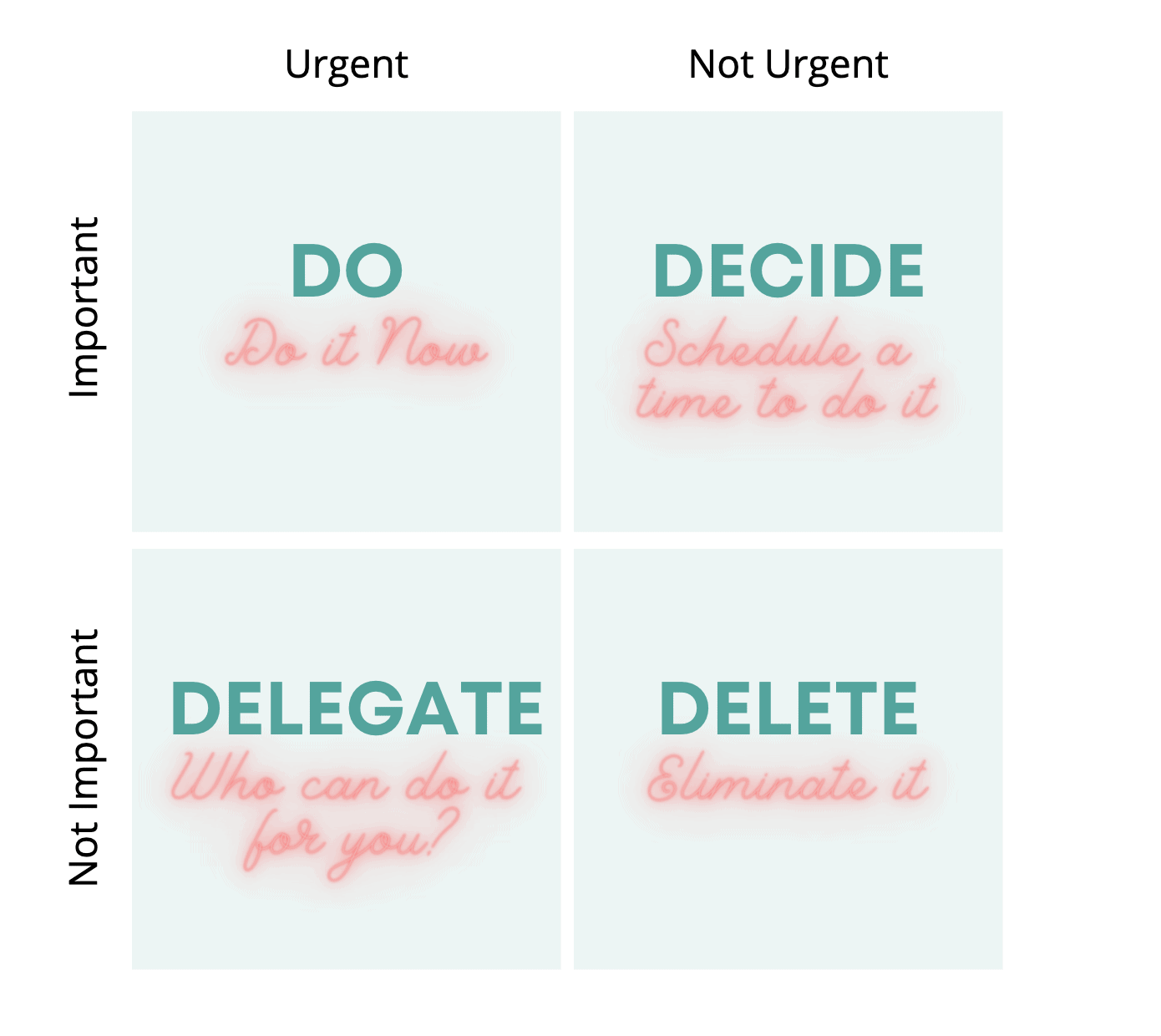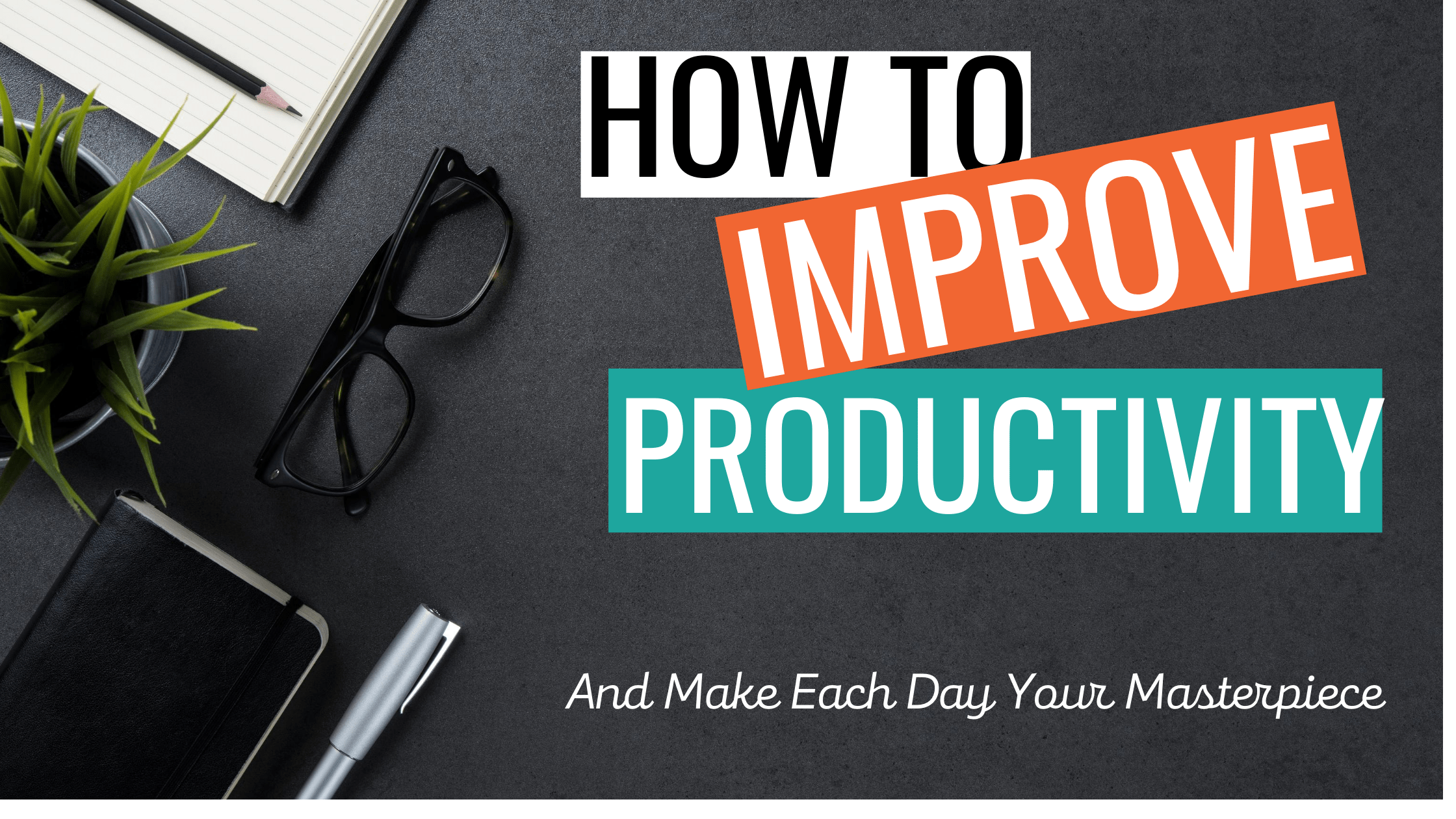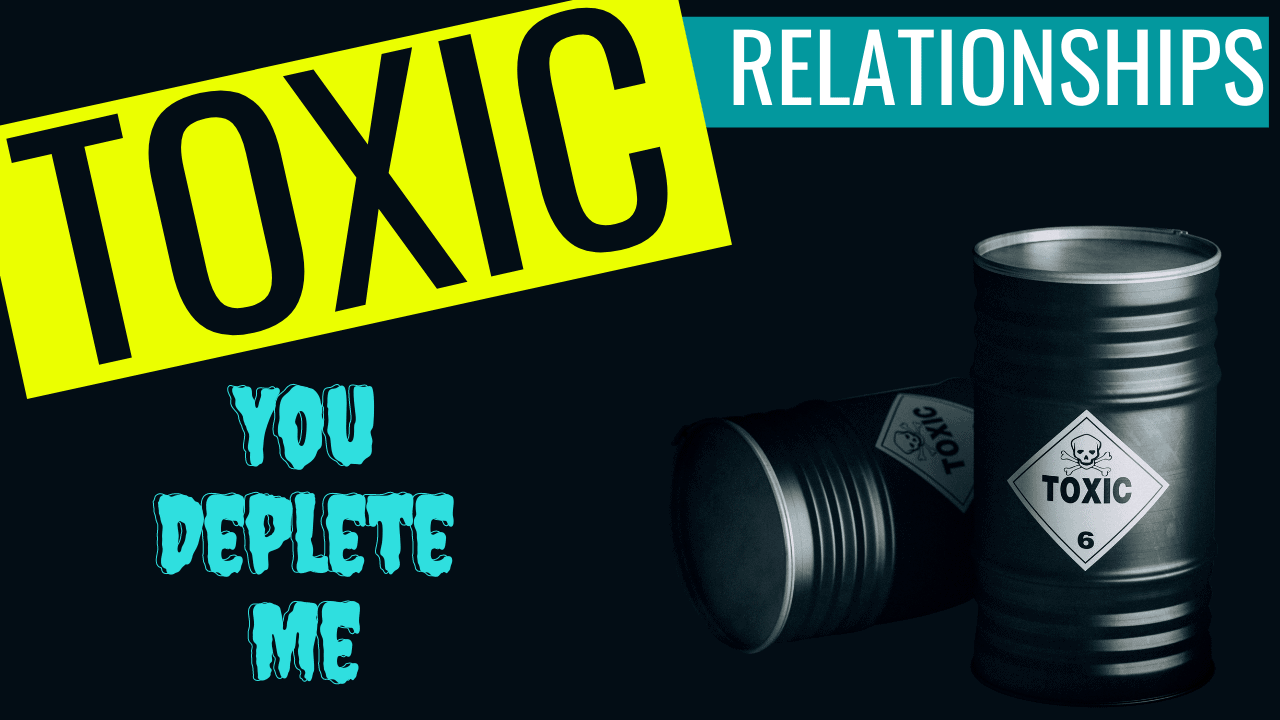People overestimate what they can do in a single day and underestimate what they can do in their whole lives. It’s not always that we need to do more but rather that we need to focus on less. Productivity is all about getting the results you want with less time and effort.
When you think of someone who is super productive, you may immediately picture a person who is busy all the time. We often make the mistake of equating being busy with being productive, but they aren’t the same thing. When you’re meeting the true definition of productivity, you won’t be chasing deadlines or running five steps behind on everything you need to get done in a day, week, month or year. It’s quite the contrary; you’ll probably be ahead of schedule.
When you’re trying to understand how to be productive, what you’re really seeking is a way to achieve your goals while having time to spend on what matters. There’s only so much time in a day, a year, or a life. In order to have a fulfilling life we must create with the heart and build with the mind. We must position ourselves to succeed by doing the other things in our life that rejuvenate us. Exhaustion negatively affects our quality and productivity.
“Should you find yourself in a chronically leaking boat, energy devoted to changing vessels is likely to be more productive than energy devoted to patching leaks.”
– Warren Buffett
The bottom line is that we all have 24 hours in a day. Productivity is being able to make the most of them and create lasting habits of achievement and fulfilment, instead of chasing endless lists of tasks. In other words, work smarter, not harder!
High productivity emerges from a mix of factors: motivation, personality, natural talent, mindset, training or education, environment, support from others, time management, and even luck. Physical elements also play a role in fostering productivity: Exercise, healthy eating, hydration, and sufficient sleep can boost efficiency both in the short- and long-term.
“Amateurs sit and wait for inspiration, the rest of us just get up and go to work.”
― Stephen King
Some people seem to be natural super-producers, while others struggle to become more productive and may look to daily exercises and better habits to help them get things done. Our productivity levels hinge on mental energy and a sense of internal and external motivation, which rises naturally from work that we find inherently meaningful. While not everything we do each day can hold deep personal meaning, research has found that maintaining focus on a larger long-term goal can help activate the drive and energy to push through those more tedious day-to-day tasks.
Unfortunately, there are countless ways for productivity to be derailed. For example, it takes time for the brain to disengage from one set of tasks and to commit to another, so switching between many tasks at once will slow overall productivity. Technology poses an endless supply of immediate distractions as well; avoiding them as much as possible helps to fuel productivity.
4 Legendary Productivity Strategies
Eliminate Time Wasting Activities
Eisenhower’s Box is a simple decision matrix to help us take action, organise tasks, and get more done. The great thing about this matrix is that it can be used for broad productivity plans, such as “How will I spend my time each week?” as well as for smaller, daily plans “What will I do today?”

Maximise Your Focus and Master Your Priorities
This method comes from the famous investor Warren Buffett and uses a simple 3-step productivity strategy to help you determine your priorities and actions. You may find this method useful for making decisions and getting yourself to commit to doing one thing right away.
Step 1 – Write down your top 25 career goals. You could potentially complete this exercise with goals for a shorter timeline, such as the top 25 things you want to accomplish this week.)
Step 2 – Now circle your top 5 goals.
STEP 3 – At this point, you now have two lists. The 5 items you circled are List A and the 20 items you have not circled are List B. Rename List B your ‘Avoid-At-All-Costs list’. No matter what, these things get no attention from you until you’ve succeeded with your top 5. It’s all about ‘focus’.
The Daily Routine Experts Recommend for Peak Productivity
This productivity strategy is pretty straightforward: Do the most important thing first each day. The Ivy Lee Method is the simplest way to implement this strategy.
At the end of each work day, write down the six most important things you need to accomplish tomorrow. Do not write down more than six tasks. Prioritise those six items in order of their true importance.
When you arrive tomorrow, concentrate only on the first task. Work until the first task is finished before moving on to the second task. Approach the rest of your list in the same fashion. At the end of the day, move any unfinished items to a new list of six tasks for the following day. Repeat this process every working day. It sounds so simple, and it totally works!
Tiny Milestones, More Momentum
Anthony Trollope was in the business of writing books and writing a book is a big project. It is not the type of task that you can complete in one day. In some cases, writing a chapter is way too big a task for a single day.
Instead of measuring his progress based on the completion of chapters or books, Trollope measured his progress in 15-minute increments. This approach allowed him to enjoy feelings of satisfaction and accomplishment very quickly (aka increased dopamine) while continuing to work on the larger task of writing a book.
This is a big deal for two reasons. Small measures of progress help to maintain momentum over the long-run, which means you’re more likely to finish larger tasks. The faster you complete a productive task, the more quickly your day develops an attitude of productivity and effectiveness.
“If yesterday got away from you, that’s okay. Let it go. Revisit the reason you started in the first place, and start again today.”
― Melissa Steginus
Improving Productivity in a Nutshell
Productivity relies on mental energy, physical energy, and motivation derived from meaningful work. Simple strategies can support these primary needs, prevent procrastination, and boost efficiency. By simply identifying our priorities, and completing projects or tasks that are most important or meaningful, we can stimulate a truly productive period. Creating a schedule for decisions that need to be made and jobs that need to be completed is also useful.
“If you spend too much time thinking about a thing, you’ll never get it done.”
― Bruce Lee
When we are burdened with responsibilities that seem particularly tedious, breaking them into small, incremental steps tends to be beneficial. This can help alleviate feelings of stress and inspire a sense of fulfilment that enables one to take on the next task.
Perhaps the most important step that people usually forget is focusing intently for a period of time and then taking a break. People typically focus best for periods of 90 to 120 minutes. After that window, a short respite, such as taking a walk or chatting with a colleague, can deliver another spurt of productivity.
The Mistake Smart People Make: Motion vs. Progress
There is a common mistake that often happens to smart people — in many cases, without you ever realising it. The mistake has to do with the difference between being in motion and making progress. They sound similar, but they’re not the same.
“It’s not about getting out of your comfort zone to reach your goal. It’s about widening your comfort zone so far that your goal fits comfortably inside. Once you do that, hitting your goals will be like hitting 3s for Steph Curry.”
― Richie Norton
Here’s the deal…
When you’re in motion, you’re planning and strategising and learning. Those are all good things, but they don’t produce a result. Progress, on the other hand, is the type of behaviour that will deliver an outcome.
If I outline 20 ideas for articles I want to write, that’s motion.
If I actually write and publish an article, that’s progress.
If I email 10 new sales leads and start conversations with them, that’s motion.
If they actually buy something and turn into a customer, that’s progress.
If I search for a better diet plan and read a few books on the topic, that’s motion.
If I actually eat regular healthy meals, that’s progress.
If I sign up for a gym membership and ask about getting a personal trainer, that’s motion.
If I actually step under the bar and start squatting, that’s progress.
If I study for a test or prepare for a research project, that’s motion.
If I actually take the test or write my research paper, that’s progress.
Sometimes motion is useful, but it will never produce an outcome by itself. It doesn’t matter how many times you go talk to the personal trainer, that motion will never get you in shape. Only the action of regularly working out will achieve the result you’re looking for.
“Making the jump between knowing and doing is what productivity is all about.”
― Chris Bailey
Most of us are experts at avoiding criticism. It doesn’t feel good to fail or to be judged publicly, so we tend to avoid situations where that might happen. For this very reason we slip into motion rather than making progress: we want to delay failure.
Yes, I’d like to get in shape.
But, I don’t want to look stupid in the gym, so I’ll just talk to the trainer about their rates instead.
Yes, I’d like to make more sales.
But, if I ask for the business, I might get turned down. So I’ll just email 10 potential clients instead.
Yes, I’d like to lose weight.
But, I don’t want to be the weird one who can’t eat anything at dinner. So I’ll just plan some healthy meals when I get home instead.
It’s easy to be in motion and convince yourself that you’re still making progress. You think, “I’ve been so busy talking to four potential clients right now. I’ve achieved so much” Or, “I brainstormed some ideas for that book I want to write. This is coming together.” Motion makes you feel like you’re getting things done, when in reality, you are actually preparing to get things done. When preparation becomes a form of procrastination, it’s a red flag you need to change something. You don’t want to merely be planning. You want to be practicing.
“If: You are 100x better at marketing than accounting…
Then: Focus on marketing, and hire someone else to do your accounting.
What do you need to stop doing yourself, and outsource to someone else?”
― Josh Steimle
It's Not the Event, It's the Process
All too often, we think our goals are all about the result. We see success as an event that can be achieved, ticked off our list and completed.
Many people see health as an event: “If I just lose 5 kgs, then I’ll be in shape.”
Many people see entrepreneurship as an event: “If we could get our business featured in Fast Company, then we’d be set.”
Many people see art as an event: “If I could just get my work featured in a bigger gallery, then I’d have the credibility I need.”
We fall into the trap of categorising success as a single event, which is basically setting ourselves up for failure. When you look at the people who are consistently achieving their goals, you start to realise that it’s not the events or the results that make them different. It’s their commitment to the process. They fall in love with the daily practice, rather than only the individual event. The best thing about this is that focusing on the process will allow you to enjoy the results anyway! Fall in love with the process of what you do and let the results take care of themselves.
“When it is important you get it done no matter the situation.”
― Chinmai Swamy
5 Habits of Highly Productive WFH People
As many of us continue to work from home, the way we maintain our productivity is changing. Here are our top tips for moving out of motion and into progress.
- Set the stage
If you must use more than one workspace in your home, establish the same environment, such as a pad of paper, photo, plant, and inspirational quote, in each location every day. By repeating the same set up, your brain receives the message that work is “on,” and the visual cue of returning to the same coordinated workspace over and over will also give you a sense of power.
- Get rid of low-value activities
Low-value activities are tasks that fill our day like emails, meetings, paperwork, and protocols that can drain the critical capacity of work-from-home teams. These low-value activities can become a barrier to getting to the important and meaningful aspects of your work, and reducing the burden requires a shift in mindset and language. You may consider checking email at a specific time the day, or set certain days for meetings.
- Add white space
Being productive is not all about doing as much as you can in a day. It’s also about conserving energy so you can do things well. When you feel like you’re drowning in calls, when you feel the tingle of adrenaline, or when your body is craving sugar or email or caffeine or any of the compensatory techniques for rest, take a break. Go outside into nature if you can. Nature restores balance.
- Turn off notifications
One of the most common habits that drains people without them even knowing, is being distracted by notifications. Whenever we see or hear an email notification, it’s almost instinctual for us to respond to it. This means we end up losing focus on what we were just working on. It takes time to get back into the zone after you’ve checked that email, which was probably an advert. So set a fixed time to check your emails and social media everyday and stick to it!
5. Create a clocking out ritual
Productivity can hinge on compartmentalisation, which is a vital habit of work-from-home professionals. Anytime you can put something in a box, literally or figuratively, it helps you focus. Use this concept to end your day visually by opening a literal compartment, such as a drawer or a cabinet, or just leaving the room that you’ve been working in and closing the door. It’s not easy to clock out in a virtual world where we can be (and sometimes feel we should be) constantly available. By having a physical clock out ritual, it helps your mind get used to differentiating between work and personal time at home.
“The most powerful productivity tool ever invented is simply the word “No.”
― Shane Parrish
One of the best ways to improve productivity and make each day your masterpiece is to be able to unconsciously perform a profitable task. We do this all the time with non-profitable tasks. For example, you can tie your shoe laces without much thought and effort. The key is to learn new skills in a way that you make them unconscious. Building unconscious systems will allow you to do the things you need to do to get the results you desire as quickly and efficiently as possible.
“Remember that you have the knowledge, tools, skills, and, if you’ve made it this far, the will to work and live with purposeful productivity. Know that your progress is in your process and that success lies in consistent and intentional practice. And believe that “should” is nowhere near as powerful as need or want.”
― Melissa Steginus






